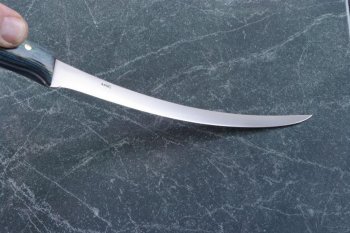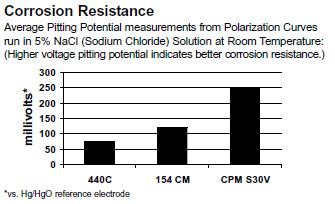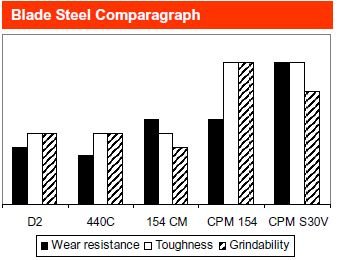There's a reason why many of us don't make fillet knives.....they are MUCH more difficult and time consuming, then the money you can get out of one.
In my experience, it's complicated to get the combination or thinness, flexibility, and a level of hardness that will hold a decent edge. The majority of the problems I have had were in grinding and heat treating....once you get less than about .070" blade thickness, simply grinding on it, in either the annealed or hardened state will make it warp...sometimes very badly. I "sorta" solved that part by building a "backing plate" of 3/8" aluminum....the blade is affixed to it, and the aluminum keeps the blade from flexing while grinding.....this in itself brought up another issue for me.....not being able to feel the heat when grinding.....and at less than .100" thick, you can burn/wreck a blade real quickly.
My advice would be to do ALL grinding AFTER heat treating. I can't speak to 1095, as I've never tried it for a fillet blade, and don't care for it anyway.....but I can tell you that I've done several fillet blades out of .100" thick 15N20....taking them down to .060-.080 and they have worked well. Heat treat wise, I did it with just the profile, hardened as I normally would, but pulled the temper at "2 steps" higher than I would normally (I would normally temper a 15N20 blade at 375-400F.....with the fillet blades, I took that temper to 450F......it will sacrifice a bit of hardness, but that was where I had to go to get the flexibility I desired. If you've not built any fillet knives prior....be ready for some experimentation, and a little frustration.....there are a lot of "little" things that you'll run across, and have to figure out versus building a standard "hunting" knife.
Here's a pic of one that I built of 15N20, and took fishing in Vancouver, BC......at the end of each fishing day, we usually had 1-2 hour of fish cleaning to do....and I would normally have to sharpen it at least once during each cleaning session. This one has a 10" blade (which was kind small for most of the jobs) and stabilized cork handles.
(I like to call this one "I FOUND Nemo!"

This is what an 88lb Halibut looks like after meeting the fillet knife....
This is what that halibut looked like BEFORE it met the knife....






